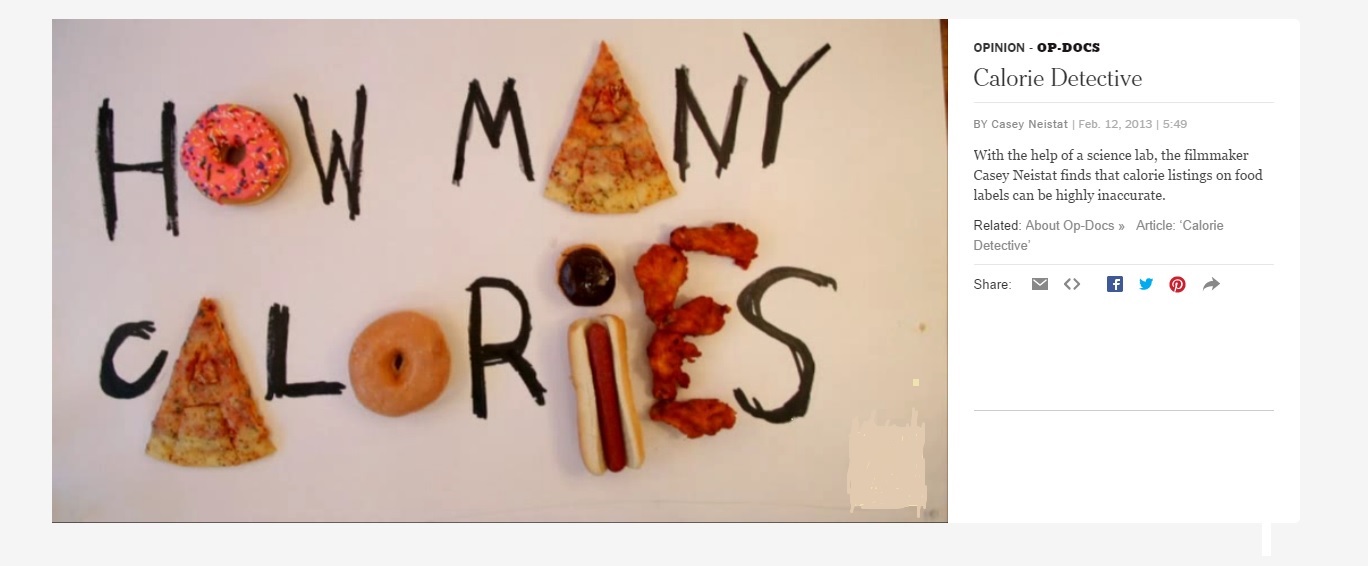Chapter 3:
How We Eat
Calorie Detective, Casey Neistat
We’ve long grown accustomed to consuming the information on nutrition labels along with the food we actually eat. But how do we know whether the facts and statistics contained on such labels are accurate? This is the question filmmaker Casey Neistat considers here. Taking a closer look at the “science of caloric consumption,” Neistat uncovers the murky, and sometimes misleading, process by which consumers are taught to assess the healthfulness of the food they buy. Casey Neistat is a filmmaker who lives in New York City.

To watch the video, click on the link below.
Discussion and Writing Questions
After watching Calorie Detective, consider the questions below.
Discussion:
Question 3.1
1. How useful do you find the nutritional information about the food you eat? Does this information help you make informed decisions as a food consumer? Why or why not?
Question 3.2
2. Why do you think the producers of this video chose the title Calorie Detective? What does this phrase suggest about Neistat’s attitude toward food labels and nutritional information?
Question 3.3
3. Choose one of the specific food items Neistat investigates here. How does his discussion of its nutritional and caloric content extend or reinforce the main argument being made? Do you find this example to be especially persuasive? Why or why not?
Writing:
Question 3.4
4. As he walks viewers through his analysis of different food items, Neistat consistently points to the discrepancy between a product’s “stated” calorie count and its “actual” calorie count. Write an essay in which you analyze how effective you find this rhetorical strategy. What do we learn by having our attention repeatedly drawn to this discrepancy? What larger point is Neistat trying to make by doing so? Are you convinced? Why or why not?
Question 3.5
5. “If the requirement to post the information [about a food’s caloric and nutritional content] is going to be enforced,” asks Neistat, “why not also enforce its accuracy?” Write an essay in which you describe and defend a policy for accomplishing precisely this goal. What program would you create to enforce the accuracy of the food information presented to consumers? And what, in your view, would make this particular program so effective?
Question 3.6
6. How do you think Sam Dolnick (“The Obesity-Hunger Paradox,” 219) would respond to this video? Do you think he would regard the discrepancies in calorie content here as evidence to support his own thesis? Why or why not?